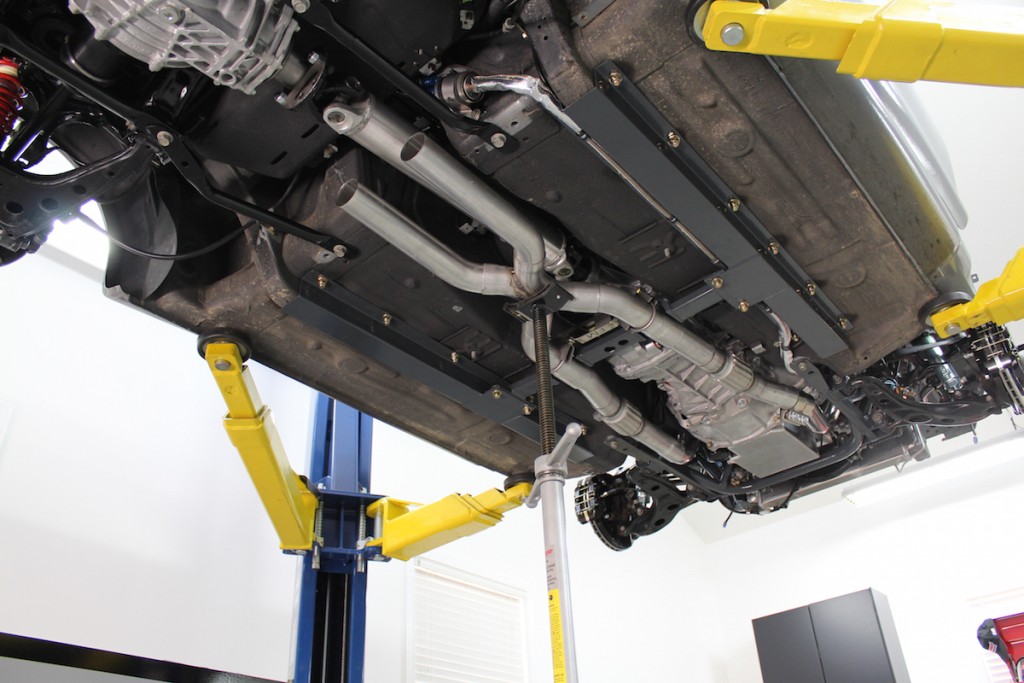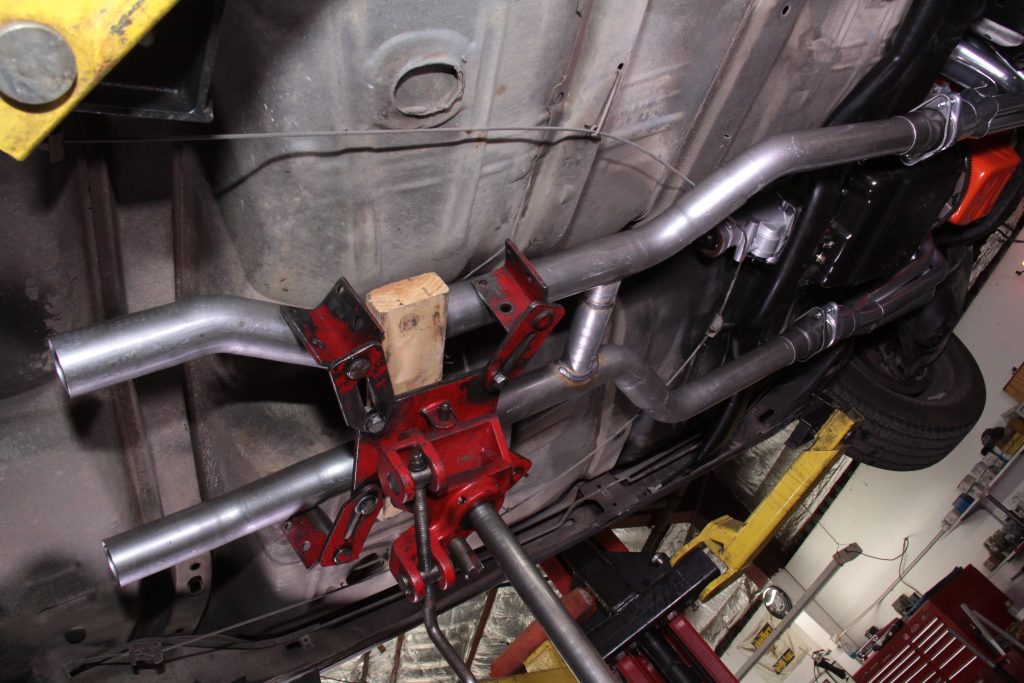Sometimes referred to as an H-pipe or an X-pipe, an exhaust crossover pipe connects the two sides of a dual exhaust system, allowing exhaust gases from both sides to mix and effectively balance out exhaust pressure between engine banks.
Why Install a Dual Exhaust Crossover Pipe?
There are several benefits to having an exhaust crossover pipe:
First and foremost, a crossover pipe (also known as a balance pipe) improves exhaust scavenging. An engine will generate low- and high-pressure exhaust pulses as the result of the engine’s specific firing order. These pulses travel at different speeds through the exhaust system, depending on the pressure levels. The difference in the speed of these pulses can be even more noticeable as camshaft duration increases.
By connecting the exhaust flow from each bank of cylinders, the crossover pipe helps balance out pressure pulses, reducing backpressure and enhancing combustion efficiency.
You may also enjoy this article: Exhaust Scavenging, Explained
Balance pipes can also lower exhaust gas temperatures, which is particularly beneficial for turbocharged engines. In addition, exhaust crossover pipes can help reduce exhaust drone, depending on the engine.

Do Exhaust Crossover Pipes Add Horsepower?
Exhaust crossover pipes can contribute to an increase in horsepower by allowing the engine to breathe more easily and operate more efficiently. The improved scavenging means the cylinders can take in a greater amount of air and fuel for more complete combustion.
And that means more horsepower.
The exact amount of horsepower gained will vary, though. Horsepower gains will depend on other factors, including the vehicle itself, engine setup, and any other modifications to the engine.
H-Pipes vs. X-Pipes

There are two main types of exhaust crossover pipes: H-pipes and X-pipes.
So which is better?
That’s the age-old question, and the answer depends on what you’re looking to achieve. Here are the pros and cons of each:
Advantages of X-Pipes
- Smoother, more balanced exhaust flow
- Increased horsepower and torque
- Improved throttle response
- Higher-pitched, more aggressive exhaust sound
Disadvantages of X-Pipes
- Sometimes require more extensive modifications for installation
Advantages of H-Pipes
- Easier installation than X-pipes
- Deeper, throatier exhaust note
- Improved low-end torque
Disadvantages of H-Pipes
- Smaller power gain compared to X-pipes, especially at higher RPM
- Less balanced exhaust flow compared to X-pipes
***
The best exhaust system for your vehicle depends on your preferences and performance goals. If you want a more aggressive sound and maximum power gains, go for an X-pipe. If you prefer a deeper tone and better low-end torque, an H-pipe might be better.
The bottom line is, an exhaust crossover pipe offers many performance benefits for both street and performance vehicles.

Not mentioned is older engines that had an exhaust crossover thru the intake manifold. One of those that sounds OK with a non-H/-X dual exhaust can suddenly go to sounding very bad just by blocking the crossover in the intake, either at the gaskets or with a different manifold with no crossover provision.